When it comes to SEO, the right keywords can make or break your online presence. In an effort to stand out among competitors, businesses of different scales want to know how many keywords to incorporate on a single page, which can be confusing.
Navigating the SEO world can feel overwhelming, especially when it comes to keywords. Too few, and you may miss out on traffic. Too many, and you risk penalties from search engines.
If you have also been struggling with the question of how many SEO keywords should I use, this blog post can help you find all your answers.
30-Second Summary
When it comes to SEO, keywords are crucial for driving traffic and engagement. If you want to enrich your strategy to stay ahead of your competitors, you must excel at understanding types of keywords in SEO, where to put SEO keywords, and maintaining the quality of your content.
Once you have the necessary information, you can optimize your content for better search engine performance and achieve your digital marketing goals.
Why Are Keywords Important For SEO?
Before you start thinking about how to add keywords to websites for SEO, you must understand why keywords are important for SEO in the first place. This understanding can play a crucial role in helping you direct your efforts in the right direction.
To begin with, you must understand that SEO is not possible without keywords. Think about keywords as indicators that tell the search engine what your web page is all about. Selecting the right keywords is key to unlocking the success of your SEO campaign.
This means that without keywords, search engines may not understand what you have to offer. Hence, your website will not rank for the search queries you may have been rooting for. Now that you have a better understanding of why keywords are so important for SEO let’s dive deeper.
Why Keyword Density Matters?
In order to get a better idea of the best number of keywords for SEO, you must take a break and ask yourself: Does keyword density really matter for SEO? But first, you must understand what keyword density is.
Keyword density refers to the number of times a keyword is used within a blog post. This metric measures the ratio of keywords used to the overall word count of the content. All these efforts have a unanimous goal: optimizing your content for the keyword you are hoping to rank for.
You might believe that using focus keywords SEO more frequently will further optimize your content, but that is not necessarily true. Before feeling confident about your content being fully optimized for search engines and users, several other factors must be considered. However, this does not diminish the importance of keyword density.
Keyword density is crucial for SEO because it prompts content creators to optimize their content for search terms, making it evident to search engines what the page is about.
-
What is Keyword Stuffing?
One common mistake website owners make regarding the importance of keywords is stuffing their content with keywords. While maintaining high keyword density in your content may not feel like a bad idea, this practice can make your content look unnatural to search engines and humans, too.
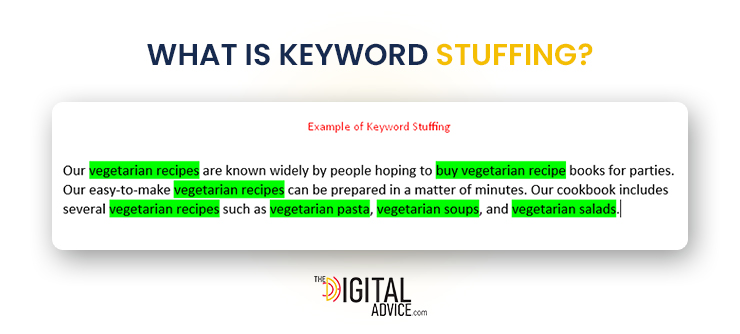
For this reason, keyword stuffing is not considered to be a good approach to making your contact rank higher and stand out among competitors. If the usage of too many keywords is making your readers uncomfortable, the search engines will not favor you either.
-
Quality over Quantity
Using keywords in your content is crucial to get the much-needed recognition it needs from people and search engines alike. Unfortunately, website owners often overlook the quality of content and stuff it with keywords. It may be causing more harm than good.
Leading search engines, such as Google, value content that provides relevant and high-quality content that focuses on the reader’s best interests. If your website is more focused on the importance of semantic keywords in SEO than the quality, it may get penalized.
How to Find Keyword Density?
Now that you have understood the importance of keywords and the best practices, you may also be eager to learn how to calculate keyword density to determine how many SEO keywords must be placed per page.
Calculating keyword density is simpler than you may think. All you must do is divide the number of times a keyword is used by the total number of words used. To determine the percentage, you can multiply the outcome by 100.
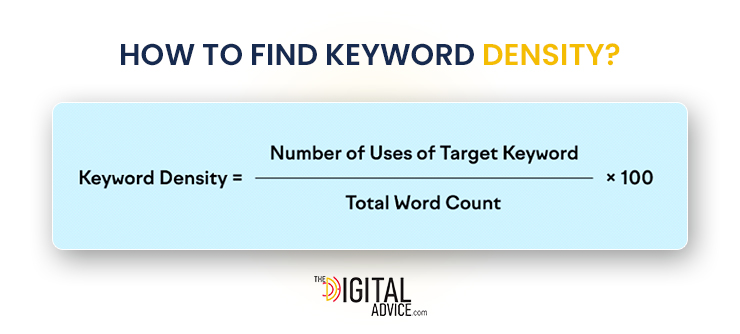
For example, if your article has 1000 words, and you used your keyword 10 times, your keyword density will be 1% based on the shared formula.
8 Types of Keywords in SEO
In order to understand the SEO keywords limit, you must also learn about the types of keywords in SEO. Each type of keyword plays a unique role in shaping your content strategy and SEO efforts. Here is all you must know about the types of keywords in SEO to create targeted content that meets the needs of your audience.
1: Seed Keywords
Seed keywords must be the first type of keywords you must know about to conduct keyword research effectively. These keywords represent the main topic or theme of your content, covering the basics the user may be looking for.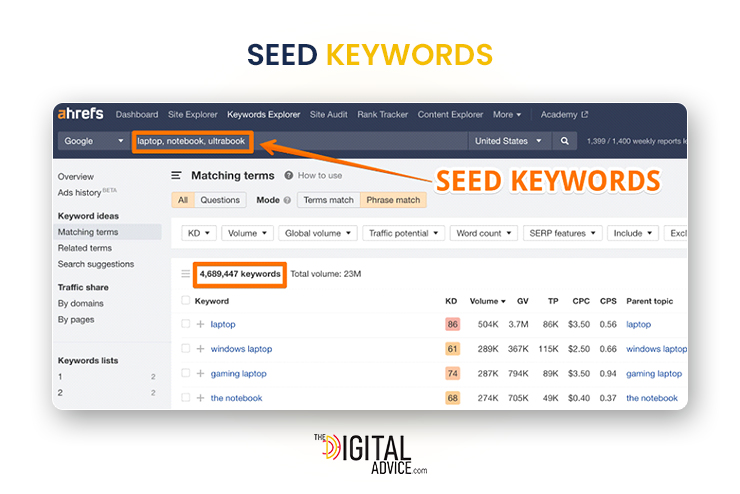
For example, if your seed keyword is “food,” you might discover related keywords like “best food restaurants,” “cooking tips,” or “food lover.” This approach can help you identify the overall direction of your content strategy and form the basis for more detailed keyword research.
2: Keywords by Search Intent
You can only create the content that best caters to the needs of your audience when you understand what they are really looking for. Users may have different intentions while searching for the answers they need. Here are some common intents you must know to understand where to put SEO keywords.
-
Informational Intent
This intent suggests that users are looking for answers or information on a topic. Hence, you must provide them with content that provides them with the answer. It could be a tutorial, how-to guide, or answers to frequently asked questions.
-
Navigational Intent
As the name suggests, this intent refers to the readers trying to reach a specific website. If your business is optimized for branded searches, being discovered will be easier. For example, you can consider “Apple iPhone” as a common example of branded search.
-
Transactional Intent
This intent suggests that users are ready to make their purchase. Your product pages, reviews, or comparisons can cater to this intent and must be optimized accordingly. “Buy running shoes online” is a great example of transactional intent.
3: Long-Tail Keywords
As the name suggests, long-tail keywords are longer and more specific searches made by users. These keywords generally indicate a higher level of intent. They often have lower competition and can attract highly targeted traffic to your website.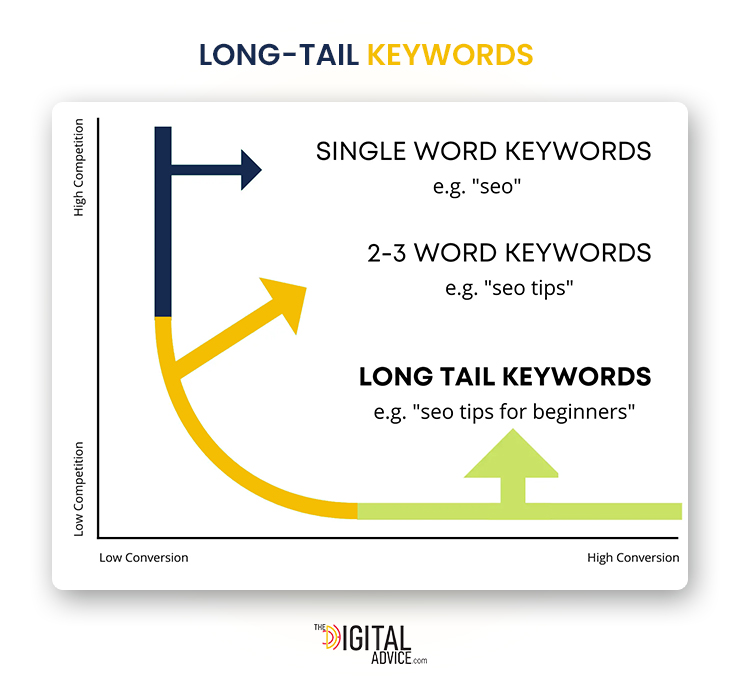
-
Topical Long-Tail Keywords
These keywords are directly linked to your content’s topic. For example, “best vegetarian recipes for beginners” is specific to vegetarians and targets a particular audience segment.
-
Supporting Long-Tail Keywords
These keywords provide additional context and help answer users’ related questions. For example, “benefits of a vegetarian diet for physical health” can support a primary topic on a vegetarian lifestyle.
4: Low-Competition Keywords
If you are someone who understands the importance of building a presence based on industry gaps, you must tap into low-competition keywords. These keywords make it easier to rank due to the lack of competing content, given a search volume you can count on.
Long-term keywords often have a decent search volume. This makes them attractive targets for content creation. These keywords can be especially helpful if you are starting out your online presence or operating in a niche market.
5: Niche Keywords
Niche keywords may have a low search volume, but that does not make them useless for your ranking goals. Niche keywords are specific to a particular area of interest but attract a highly targeted audience who are more likely to convert.
For example, “vegetarian stew recipes” is a niche keyword within the broader vegetarian industry. These keywords may not have a high search volume, but they surely can help you establish authority in a specific area and drive quality traffic.
6: Branded and Unbranded Keywords
Understanding the difference between branded and unbranded keywords is essential for positioning your content. Using both types can diversify your traffic sources and indicate a higher likelihood of conversion.
-
Branded Keywords
These include specific brand names and are often searched by users who are already familiar with those brands. People searching for branded keywords are often ready to make a purchase. For example, “Samsung Tablet” and “HP laptops” are common examples of branded searches.
-
Unbranded Keywords
These keywords focus on product categories or general terms. These may attract users who are still in the exploratory phase and may not be prepared to make a purchase yet. For example: “best sneakers for running” or “best cruelty-free lipsticks.”
7: Your Competitors’ Keywords
No matter how much you despise your competitors, keeping an eye on what they are up to can always help you stay informed and make the best decisions in your favor. Looking at the keywords your competitors are using can provide valuable insights into market trends and gaps in your content strategy.
In addition, looking at your competitor’s keywords can also help you understand your audience better. This analysis can guide your content creation, helping you target keywords that competitors may have overlooked.
8: Primary and Secondary Keywords
The primary keyword is the main topic of your page. Keyword research begins with primary keywords, which are used to optimize a web page. The secondary keywords are also created on the basis of your primary keywords.
Using both types of keywords effectively can enhance the relevance of your content, helping you rank for multiple related queries.
Primary Keywords are the main focus of your content and should be included in key areas like titles, headings, and throughout the body. On the other hand, secondary keywords are related terms that complement the primary keyword.
How to Find Keywords
Learning how to find trending SEO keywords is the first step to winning the SEO battle and finding the ideal potential customers. While ranking on top and boosting website traffic is every business’s dream, learning how to add keywords to website for SEO is key to success.
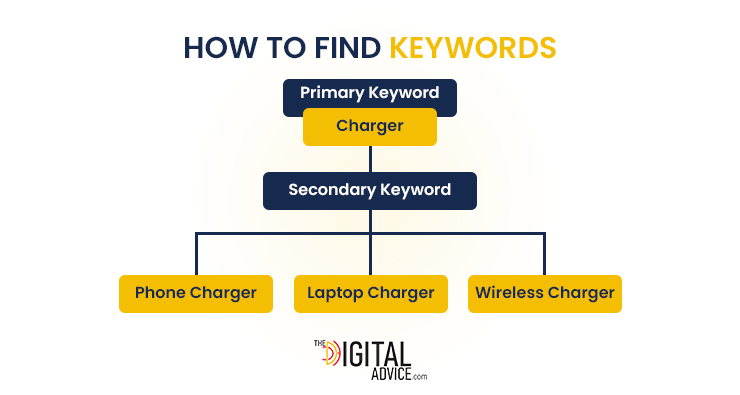
Primary Keywords
When it comes to finding primary keywords and learning the importance of semantic keywords in SEO, guesses are not a source of information to rely on. You must create a detailed strategy to find winning primary keywords.
It is always a good idea to start by searching for primary keywords and understanding your audience, their needs, and interests. On this basis, you can brainstorm possible terms, phrases, or questions that your target audience may seek.
Once you make an elaborate list of potential keywords, you must spend some time figuring out their relevance to your business. Make sure to pay special attention to the importance of semantic keywords in SEO, along with balancing high- and low-volume keywords.
Secondary Keywords
Once you have identified primary keywords, the path to finding secondary keywords becomes easier. You can start by referring back to your primary keyword list. For instance, if your primary keyword is “ideal yoga pose for relaxation,” secondary keywords could be “best yoga for mental peace,” “yoga and mindfulness,” etc.
Several tools or the Google AdWords Keyword Planner can make finding secondary keywords for your content a lot easier. In addition to using these tools, you can also look at what your competitors are up to get more ideas.
In addition, you must also make sure to consider the intent behind the search queries. You can look into long-tail keywords for your content. They may not be the most competitive, but they can make your online presence more discoverable.
Frequently Asked Questions (FAQs)
Here are answers to some of the most frequently asked questions about keywords, SEO keywords limit, and more.
1: Is Using Too Many Keywords Bad for SEO?
You do not have to worry about using too many keywords if the keyword density is 1-2% per page. Maintaining this percentage across your website can help you rank higher, making it easier for you to reach a wider audience. However, you must not overuse your primary keywords as it may look suspicious to readers and search engines alike.
2: What are the Benefits of Using Keywords?
There are several benefits of using keywords on your website pages. These benefits include higher rankings on search engines, added brand recognition, boosted organic search traffic, and more. Keywords are also the best way to connect with the right audience by telling search engines what you have to offer.
3: How are Primary and Secondary Keywords Different?
A primary keyword is the main term of your content that you must target. It is often the topic or at least a part of it. On the contrary, secondary keywords support primary keywords. Their purpose is but not limited to helping search engines understand the depth of your content. Together, both primary and secondary keywords help you reach your goals regarding online presence.
4: How Does Search Intent Influence Your Keyword Strategy?
A user may be motivated to search for something based on their need for information or purchase a product. Their motivation is known as search intent, and businesses must understand this intent to ensure success. It must be understood by businesses to understand their audience better and determine a direction for their keyword strategy.
5: Why is Semantic Richness Important in Content?
Semantic richness refers to the practice of incorporating a diverse set of related terms and topics within content. This approach helps search engines comprehend the coverage and depth of a particular subject. Semantic keywords are important in SEO because they ensure that the content fully encompasses the topic and meets diverse user needs.
6: Can I Rank Without Targeting Specific Keywords?
Technically, yes. It is possible for you to rank without targeting specific keywords on the basis of high-quality content, such as user response. However, it can be a very time-consuming and challenging process. Hence, it is always a better idea to use strategic keywords that can accelerate the process and make ranking easier.









